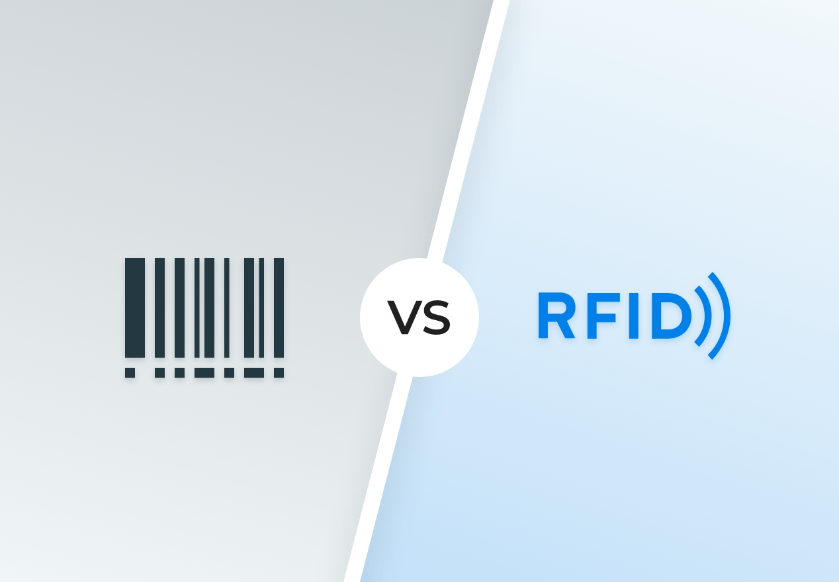
Compare the Barcode Technology and RFID Technology
Similarities and Differences Between Barcode Technology and RFID Technology
Introduction: A bar code is a graphical representation of information that can be made into a bar code and then used to input information into a computer using a corresponding scanning device. The most common ones are the one-dimensional bar code and two-dimensional bar code.
A bar code is a graphical representation of information that can be made into a bar code, which is then entered into the computer using a corresponding scanning device. The most common ones are the one-dimensional bar code and two-dimensional bar code.
A one-dimensional bar code only expresses related information in one direction (generally in the horizontal direction) but does not express any information in the vertical direction, and usually has a certain height in order to facilitate the alignment of the reader. It is characterized by fast information entry, low input error rate, but small data capacity, and the bar code cannot be read after being damaged.
A two-dimensional bar code is a bar code that stores information in two-dimensional space both in the horizontal and vertical directions. It is an application technology for recording information by using a certain geometric shape to distribute information (black and white) on a plane according to a certain rule, and can be divided into stacks. Type/row-row QR code and matrix-type QR code. Among them, the stacked/row-row two-dimensional code form is formed by stacking one-dimensional codes of a plurality of lines and short cuts; the matrix-type two-dimensional codes are formed in the form of a matrix, and "points" are used to represent the binary in the positions of the corresponding elements of the matrix. "1" uses "null" to represent binary "0," and consists of an array of "points" and "nulls."
Two-dimensional barcodes make up for the inadequacies of one-dimensional barcodes. They are characterized by high information density and large capacity. They not only prevent mistakes but also correct mistakes. Even if the barcode is partially damaged, it can restore the correct information to a variety of reading devices for reading.
Radio frequency identification technology RFID (Radio Frequecy Identification), commonly known as electronic tags. RFID is a non-contact automatic identification technology. It is mainly used to establish unique identification for various items and is an important supporting technology for the Internet of Things.
RFID Technology RFID
The RFID system consists of: electronic tags, readers (readers), and computers as servers. Among them, the RFID tag contains an RFID chip and an antenna. The working principle is that when the user uses the reader to operate the electronic tag on the article, the reader antenna sends an electromagnetic signal to the tag and communicates with the tag. The RFID code in the tag is transmitted back to the reader, and the reader is then connected to the system. The server conducts a dialogue and queries the description of the item according to the code.
RFID system work principle
RFID tags are divided into active and passive tags. The active tags are battery-powered, and the distance between the active tag and the reader can reach more than 10m. However, the cost is higher and applications are less. Currently, passive tags are used in practical applications. The electromagnetic field emitted by the reader extracts energy to supply power. The distance between the reader and the reader is about 1m.
Barcode Technology VS RFID
Barcode technology and RFID technology are referred to as the Internet of Things items IDs, because they can be used to store information on items and can represent the identity of items to some extent, but RFID stores more information and can be used as the only item. Identification. In addition, there are many differences between the two:
(1) The bar code does not have reading and writing functions, and no additional information can be added to the already printed bar code; the RFID tag can be read and written, and the RFID reader can exchange information with the tag and modify the stored information within the allowed range of the tag design.
(2) The bar code reader needs to read the printed bar code closely, and the bar code only supports close range reading; RFID tags support farther reading distances, and RFID readers do not require active RFID tags or The passive RFID tag performs close-range alignment reading.
RFID tags are usually more robust than bar codes; however, RFID tags are also much more expensive than bar codes.



